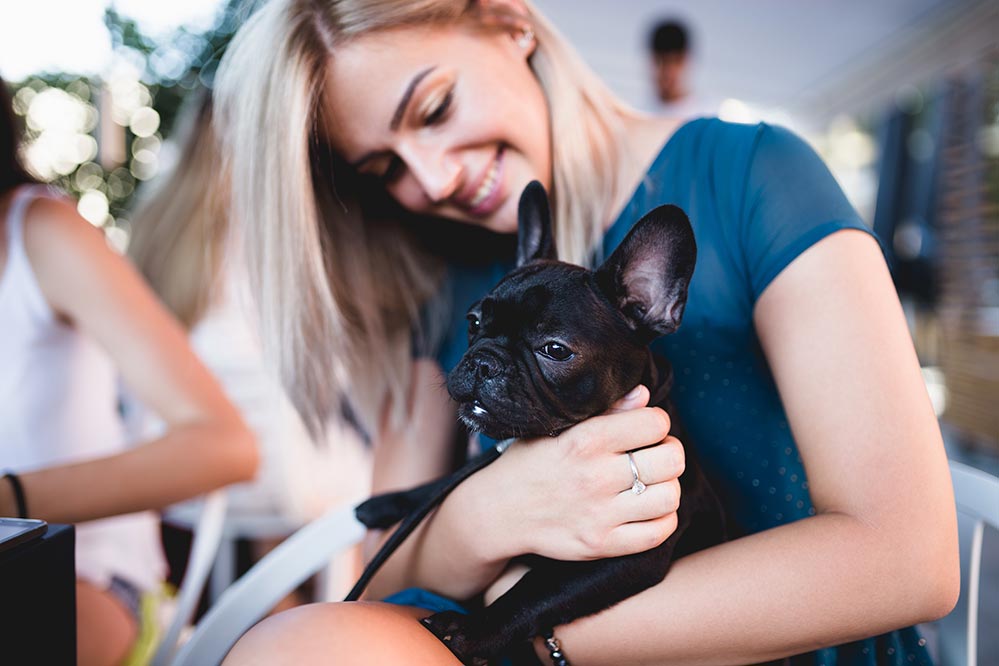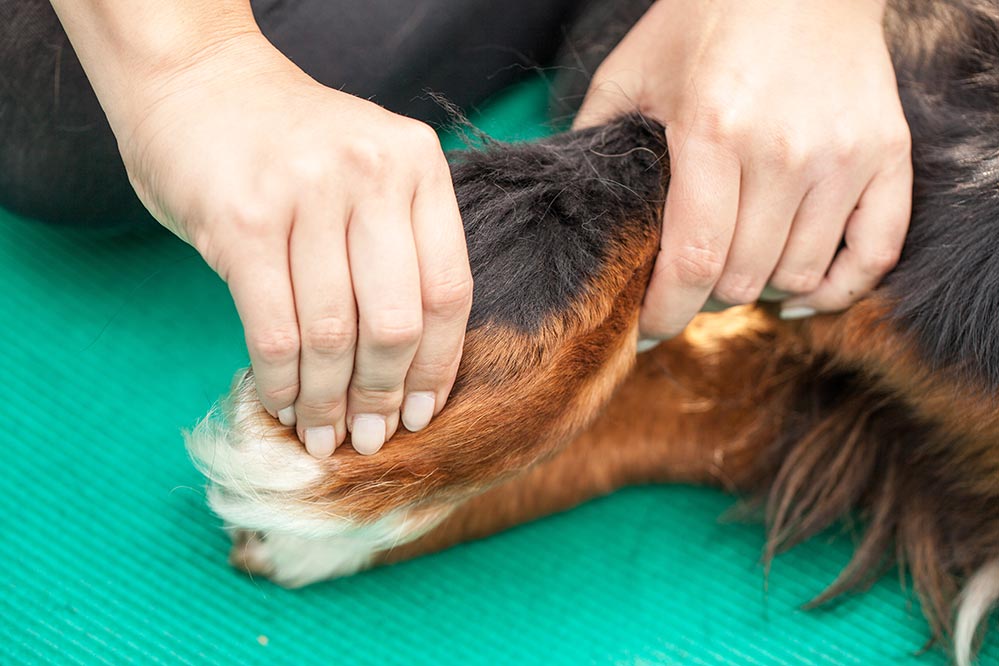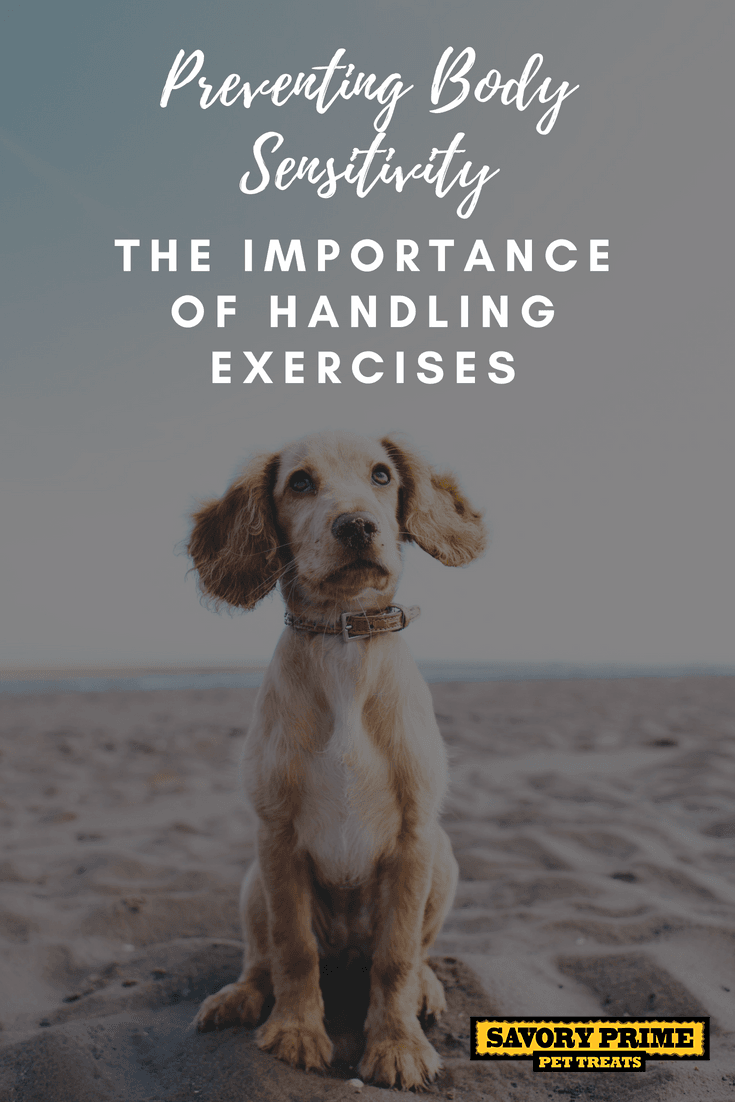Cuddling and petting your dog is fun for both of you, but when it comes time for grooming and other forms of handling, such as teeth brushing, checking for ticks, and nail trimming, many dogs run for cover. One terrible coat mat or a clipped nail quick, and your dog will decide the brush or nail trimmer is an enemy. Some dogs even develop body sensitivity to the point where they don’t want to be touched at all.
However, it’s essential for your dog’s health that you can handle and inspect him. Rather than chasing your dog and struggling to hold him, you can teach him to enjoy being touched with handling exercises, so grooming becomes easier. If your dog associates handling with wonderful rewards like treats and praise, he will look forward to it. Or at least he will tolerate it for the sake of the goodies that may come his way.
Training Your Puppy
It’s best to start handling exercises with your puppy when he is quite young. A daily puppy massage is a great way to give your canine companion a health check and to introduce him to handling. Gently stroke and squeeze your puppy’s paws, inspect his paw pads, and touch his nails, all while praising him for being a good dog. Every so often, offer him a delicious treat. Then lift and massage his ears and look in his mouth. Again, praise and treat. Don’t forget to stroke his belly and lift his tail. You should be able to inspect him all over and gently restrain him as you pair your touch with rewards.
The best time for these handling exercises is when your puppy is calm and tired, like after a play session or a walk. You can even turn your puppy’s mealtime into handling time, using his dinner as rewards for calmly accepting your touch. The purpose is to teach your puppy to associate handling with good things. If he fusses when you handle him, start by feeding him a treat. He should be too busy eating to bother with nipping or wiggling.
It won’t take long for your pup to learn that your touch leads to good things. Then you can work up to brushing his coat and teeth and trimming his nails. Start with a few brush strokes, brushing one tooth, or clipping only one nail. Pile on the praise and treats as you calmly introduce him to the tools and what they do. Work slowly and stay positive.
Once your puppy is comfortable being handled by you, ask other people to participate in the exercises. Over his lifetime, your dog will need to be handled by strangers, like the vet or groomer, so the more people who handle him early on, the better he will cope in the future. Remember to praise and treat your puppy to reward him for his cooperation.
Training an Older Dog
If you have an older dog that has already learned to avoid handling, it’s not too late to turn things around. You just need to move slowly and take your time. Your goal is to counter-condition your dog — to change his emotional response from negative to positive. This is done by associating the handling with something your dog loves, such as a piece of hot dog or cheese. Your touch should predict that something good is about to happen. Start with areas your dog is most likely to tolerate and save the most sensitive areas for last.
Here is an example of counter-conditioning your dog:
- Reach toward your dog’s paw, then remove your hand and feed a treat.
- Gently and briefly touch your dog’s paw, then remove your hand and feed a treat.
- Touch your dog’s paw for one second, then remove your hand and feed a treat.
- Touch your dog’s paw for several seconds, then remove your hand and feed a treat.
- Gently squeeze your dog’s paw, then remove your hand and feed a treat.
- Hold your dog’s paw, then gently let it go and feed him a treat.
If you use a marker, such as a clicker or the word “Yes,” use it at the end of the touch, before you give the treat. If your dog is too nervous or touch-sensitive, start by feeding him at the same time you touch him. Once he relaxes, you can switch to having your touch come first.

Recent Pet Posts
Blog Categories
Product categories
- Accessories (9)
- Chicken & Veggie Wraps (8)
- Grillers Jerky Tenders (4)
- Jerky Treats (10)
- Made in the USA (9)
- Non-Rawhide Treats (28)
- Beggar Bone (11)
- Bully Sticks (4)
- Butcher Bone (4)
- Cod Skin Fish Treats (3)
- Pork Skin Twists (2)
- Pressed Rawhide Bones & Rolls (16)
- Bones & Rolls (6)
- Pressed Rawhide Bulk (6)
- Twist Sticks (4)
- Savory Munchies (13)
- Supreme Bones & Rolls (48)
- American Rawhide Bulk (16)
- Rawhide Bones (14)
- Rawhide Chips (6)
- Rawhide Rolls & Sticks (12)
- Uncategorized (8)



